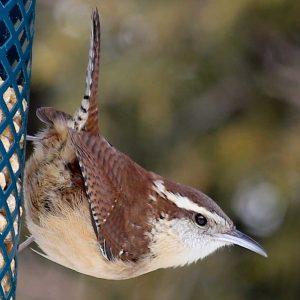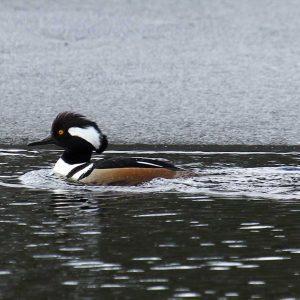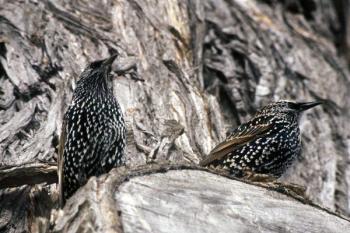Mysterious Murmurations and Such
The Augusta area Christmas Bird Count took place Saturday, Dec. 16. It was a very mild day for mid-December, another in a series of rather mild days that increasingly have become the new normal as climate change increasingly impacts us all. The mild temperatures certainly contributed to the fact that we saw a lingering great blue heron along the Kennebec River in Gardiner. In some years past, the river would be largely frozen on the day of the Christmas Bird Count, making it highly unlikely that a bird like a great blue heron, dependent on open water, would be around. Indeed, this was the first time we’d seen one on the count in the 18 or 19 years that we’ve been participating.
We had a few other fun sightings: 20 bald eagles soaring around in one view; at least three Carolina wrens; an eastern bluebird near the cemetery; three hooded mergansers in Cobbosseecontee Stream.
Yet the sighting that enthralled us the most was not any of these, and the species involved was not an unusual one. It was, however, an event that we have tried unsuccessfully to document for the Augusta Christmas Bird Count for all the years that we have been a part of it.
Every now and then over the years, we have been driving in winter over the bridge that spans the Kennebec River between Gardiner and Randolph right around sunset when we would suddenly see a large number of black birds sweeping in under the bridge. European starlings, we were sure, but how many exactly and were there any other species (perhaps a brown-headed cowbird, red-winged blackbird, or common grackle) among them? Knowing that some number of starlings come in to spend the night under this bridge, we have wanted to be there at the right time during the Christmas Bird Count to tally them.
But somehow the timing was never quite right.
This year we thought we had missed it once again despite standing, from about 15 minutes before sunset, on the beautiful platform on the Gardiner waterfront that overlooks the river and the bridge. We’d waited and waited as the pink ebbed from the darkening sky, and finally started to walk away when we spotted something in the sky coming from the West.
It was a tight, high-flying tight flock of dark birds—about 300 of them! Through our binoculars we could see that they were indeed starlings. The flock stayed hundreds of feet above the river and swirled round and round, changing shape. Sometimes the flock looked like a perfect ball; seconds later it would become oval-shaped and compress into a wide belt. Then the entire flock would turn and coalesce once more into a ball, then shift yet again so that the ball would go from light to dark.
This was the famous murmuration movement of starling flocks, which periodically go viral on the internet when these spellbinding movements are captured on video by some lucky observer. We were the lucky ones this time and watched in awe for about 10 minutes as the flock slowly descended closer and closer to the bridge. At nine minutes after sunset, in some miraculous and mysterious way, 300 birds poured in under the bridge as one and disappeared in just a few seconds, tucked in safely and warmly for the night.
What a sight!
Jeffrey V. Wells, Ph.D., is a Fellow of the Cornell Lab of Ornithology and Vice President of Boreal Conservation for National Audubon. Dr. Wells is one of the nation's leading bird experts and conservation biologists. He is a coauthor of the seminal “Birds of Maine” book and author of the “Birder’s Conservation Handbook.” His grandfather, the late John Chase, was a columnist for the Boothbay Register for many years. Allison Childs Wells, formerly of the Cornell Lab of Ornithology, is a senior director at the Natural Resources Council of Maine, a nonprofit membership organization working statewide to protect the nature of Maine. Both are widely published natural history writers and are the authors of the popular books, “Maine’s Favorite Birds” (Tilbury House) and “Birds of Aruba, Bonaire, and Curaçao: A Site and Field Guide,” (Cornell University Press).


































